Star Wars: The Last Jedi's Mark Hamill: 'No one wants to see old versions of us, running around, bumping heads on the Death Star. It's sad'
The actor has always embraced his Star Wars legacy, but when he was invited back for ‘The Force Awakens’ and ‘The Last Jedi’, he hesitated: ‘I was just really scared.’
It was maybe the longest build-up in movie history.
After more than three decades since he was last on screen, years of anticipation and some two hours into Star Wars: The Force Awakens, there was Luke Skywalker, the once youthful hero of this science-fiction saga, revealed as a weathered elder. Standing at a cliff with a solemn look on his face, he was about to receive his lightsaber from Rey, the young heroine, when the story ended and the credits rolled. Luke never said a word.
If this was a bittersweet moment for fans – an abrupt, tantalising preface to the next Star Wars sequel, The Last Jedi, which opens in December – imagine how it felt for Mark Hamill.
Since 1977, when the original Star Wars went supernova and started a multibillion-dollar franchise, Hamill has been synonymous with Luke Skywalker, the desert-dwelling tenderfoot who destroys the Death Star, becomes a Jedi knight and reconciles with his villainous father, Darth Vader.
In 2015, The Force Awakens found more substantial screen time for the senior incarnations of Princess Leia (Carrie Fisher) and Han Solo (Harrison Ford). But Luke was withheld for maximum anticipation, a decision that Hamill came to accept – eventually – as a gift to him and his character.
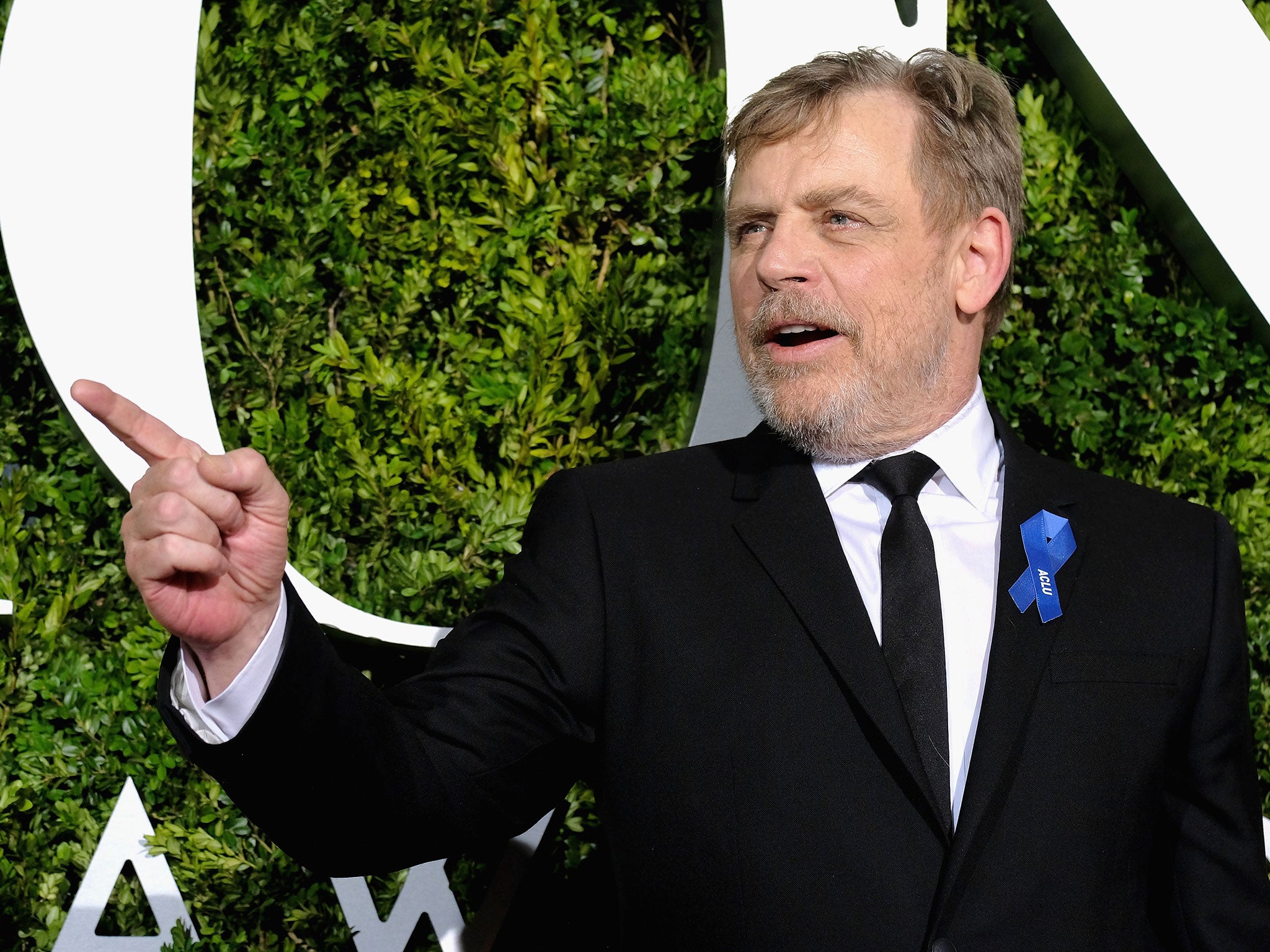
“It is, if you can be objective about it,” he says, sitting in his home here near the Pacific Ocean.
Finding that inner peace took Hamill several months of frustration and self-pity – not to mention a Lucasfilm-mandated regimen of dieting and exercise, during which he thought to himself: “Why are they training me to turn and remove a hood? I could be the size of Marlon Brando in Apocalypse Now, who’s going to know?”
You would understand if Hamill, now 66, had a conflicted relationship with Star Wars, which put him on a pop-cultural pedestal. The series defined and dominated his career, even as he took on other film, television and theatre roles; the franchise went into periods of hibernation, then came roaring back and restored him to relevance when he least expected it.
But Hamill isn’t bitter or jaded, and he isn’t Luke, though he has retained some of that character’s incorruptibility. He’s gone from a new hope to an old hand, with a lined, expressive face and a grey beard, beneath which lurks a mischievous sense of humour, a yearning to perform and a joy in sharing Star Wars war stories.
At heart, he is as much of an unapologetic geek as any of his admirers, as astonished by the circumstances that brought Star Wars into his life as he is grateful that he gets to return to its galaxy of long ago and far, far away.

Watch Apple TV+ free for 7 day
New subscribers only. £8.99/mo. after free trial. Plan auto-renews until cancelled.
ADVERTISEMENT. If you sign up to this service we will earn commission. This revenue helps to fund journalism across The Independent.

Watch Apple TV+ free for 7 day
New subscribers only. £8.99/mo. after free trial. Plan auto-renews until cancelled.
ADVERTISEMENT. If you sign up to this service we will earn commission. This revenue helps to fund journalism across The Independent.
“I’m such a fraud,” he says with a theatrical air. “But I’m enjoying all the residual attention that the movie’s getting. I should be, by all rights, puttering in my garden with a metal detector, telling kids to get off my lawn. What’s not to love?”
On this October afternoon, he is at home with his wife, Marilou, and their daughter, Chelsea; the couple also has two sons, Nathan and Griffin. The spacious dwelling is hardly a shrine to Star Wars – it’s mostly decorated with artwork of cherubs and the Beatles, Hamill’s own cultural obsession, though you might spot a photo of the two-year-old Nathan frolicking with Yoda on the set of Return of the Jedi.
Hamill is not unduly nostalgic, but he conducts himself with an impish refusal to grow up. In conversation, he will sometimes stretch on the floor in yoga poses; he’ll slip into the exaggerated voices of famous colleagues – the adenoidal clip of the Star Wars creator George Lucas or the disaffected monotone of Ford.
In many ways, he is still the boy who was fascinated with cartoon voice actors, musical theatre, stage magicians and ventriloquists, and whose favourite film was King Kong.
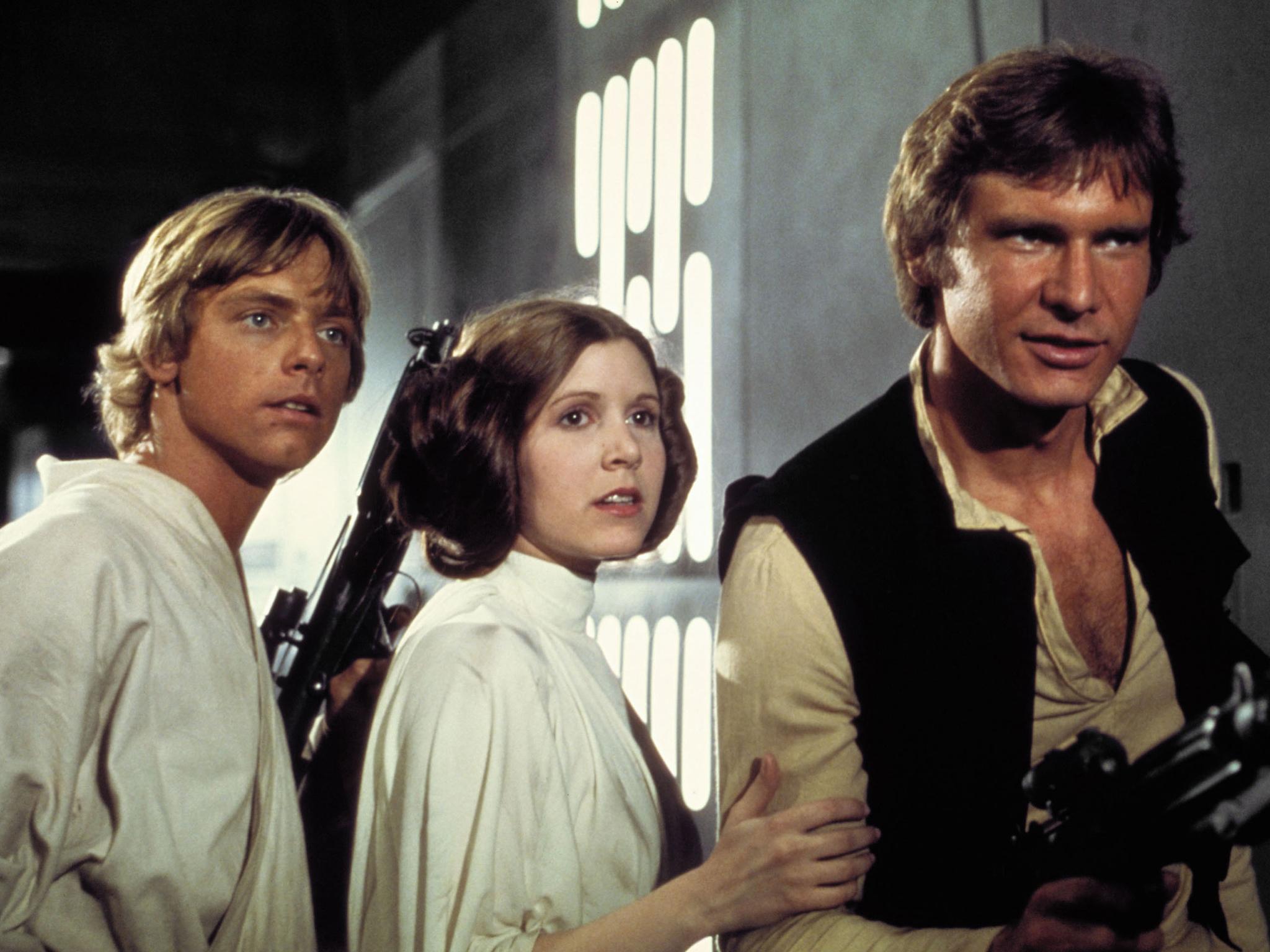
Proudly recalling a fight scene from Return of the Jedi, Hamill says: “For me, sitting in the rancor’s hand, I was going all Fay Wray – it’s like a major accomplishment to me. But it was always that way. I’d say ‘Hey, you guys, my face is on the back of a box of C-3PO’s cereal!’”
The son of a navy officer, Hamill was the middle child of seven. He had an itinerant upbringing, living in California, Virginia and Japan, attending nine schools in 12 years and perpetually feeling like the new kid.
When he arrived in Los Angeles in 1969, Hamill was interested in acting, but really wanted to be involved in showbusiness however he could. “If I didn’t get a part, no problem,” he says. “Then where do I go? I sell tickets. I make props. I make posters. I don’t have to be in the show – I want to be near the show.”
He landed early roles on General Hospital and The Partridge Family. And then, of course, came Star Wars: a strange screenplay, still in flux when he read it, with sentient robots, laser swords and a supernatural spirituality bound up in a fable about good and evil.
Lucas said he chose Hamill from a pool of young actors because he brought a measure of humanity to a film full of space vehicles and special effects. “I needed a protagonist who was comfortable treating these things both casually and seriously in order to give that world an air of authenticity,” Lucas says. He added that Hamill “brought a boyish enthusiasm and exuberance that really defined the character”, and that “made Luke accessible and relatable to people in the first Star Wars” and its sequels.
Hamill committed fully to the material, but was unsure it would find a wider audience. “I thought, even if this thing doesn’t slay at the box office, it’s got midnight cult movie written all over it,” he says. “Move over, Rocky Horror, Star Wars is here!”
Instead, Star Wars became an international phenomenon, tying Hamill to his character and to Fisher and Ford – even now, he sometimes accidentally calls them “Harry and Carrison” – as they promoted the movie together.
When the critic John Simon wrote in New York magazine that Ford had performed “adequately”, Hamill “uninspiredly” and Fisher “wretchedly”, Hamill says, “We had T-shirts made: ‘adequate, uninspired and wretched’. I said, ‘Harrison, adequate’s practically a rave compared to what we got’.”
Ford said that during this time, “the three of us were like a very small tribe in the wilderness. We really were figuring this out as we went along.” Hamill struck him as “a very bright, sincere young actor,” who Ford said “seemed probably the most clear on what he was doing.”
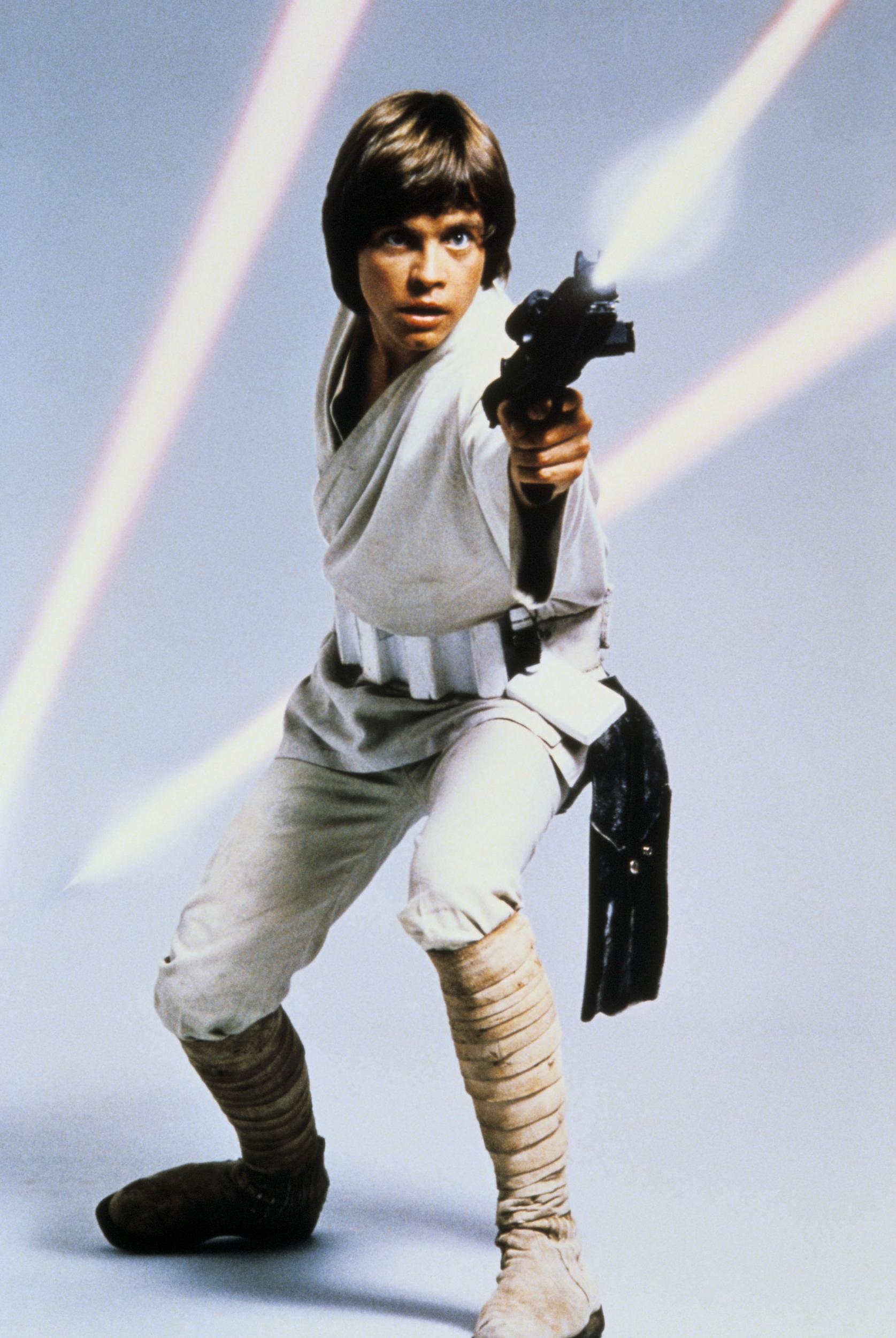
Hamill, who receives a percentage of the Star Wars royalties, did not go onto a mainstream career, but he is hardly rueful now. Of his cohort, Hamill says Ford was the one meant for matinee idol status: “He’s a brilliant actor – that’s a given,” he says. “He’s also a leading man. When I tested for this thing, I assumed he was the protagonist and I was his annoying sidekick.” Hamill believed he’d find his destiny on a different path – one that was less glamorous, but that fully embraced his affection for the esoteric, the offbeat and the weird.
After two blockbuster sequels, The Empire Strikes Back in 1980 and Return of the Jedi in 1983, Hamill believed the Star Wars story was complete. With newfound visibility, he decided to pursue a lifelong dream of performing on Broadway, where he had played John Merrick in The Elephant Man. “I wasn’t getting character parts in movies and television,” he explains. “Unless you’re Meryl Streep, they don’t let you do accents.”
He starred in the Broadway production of Amadeus while Return of the Jedi was still in cinemas. But his 1985 musical Harrigan ’N Hart, about a pair of 19th century variety-theatre stars, was a notorious dud, running less than a week of regular performances.
Over the next 30 years, Hamill was cast in cult films and TV shows, often poking fun at his inability to shed his Star Wars legacy. He played an interstellar fighter pilot in the Wing Commander video games, and on The Simpsons he portrayed himself playing Nathan Detroit as Luke Skywalker in a mediocre dinner-theatre production of Guys and Dolls. Perhaps his best-known work from this era was providing the voice of the malevolent Joker in several animated Batman TV shows, movies and video games.
He was always comfortable being part of the Star Wars subculture, gladly attending conventions and engaging with the people he calls UPFs (for “ultra-passionate fans”).
“It’s clearly not for everyone – I get that,” Hamill says. “But the passion of it all is just astonishing. The way it’s become part of the fabric of their lives – ‘I met my wife at this movie, we named our child Leia’ – it’s moving.”
He was not involved in the much-maligned Star Wars prequels from 1999 to 2005. And when Lucas invited him and Fisher to a lunch in 2012, to tell them he was giving control of Lucasfilm to Kathleen Kennedy and that a new Star Wars trilogy was being planned, Hamill had no expectation of being asked to participate. “We figured we had the middle three,” he says. “It was over.”
When Lucas said their characters would be included in these new films if they wanted to play them, Hamill says, “I was completely stunned. Carrie, not a minute went by – she slapped the table and goes, ‘I’m in!’ I said, ‘Carrie, poker face!’”
Hamill needed more time to think. “I was just really scared,” he says. “I thought, why mess with it? The idea of catching lightning in a bottle twice was ridiculously remote.”
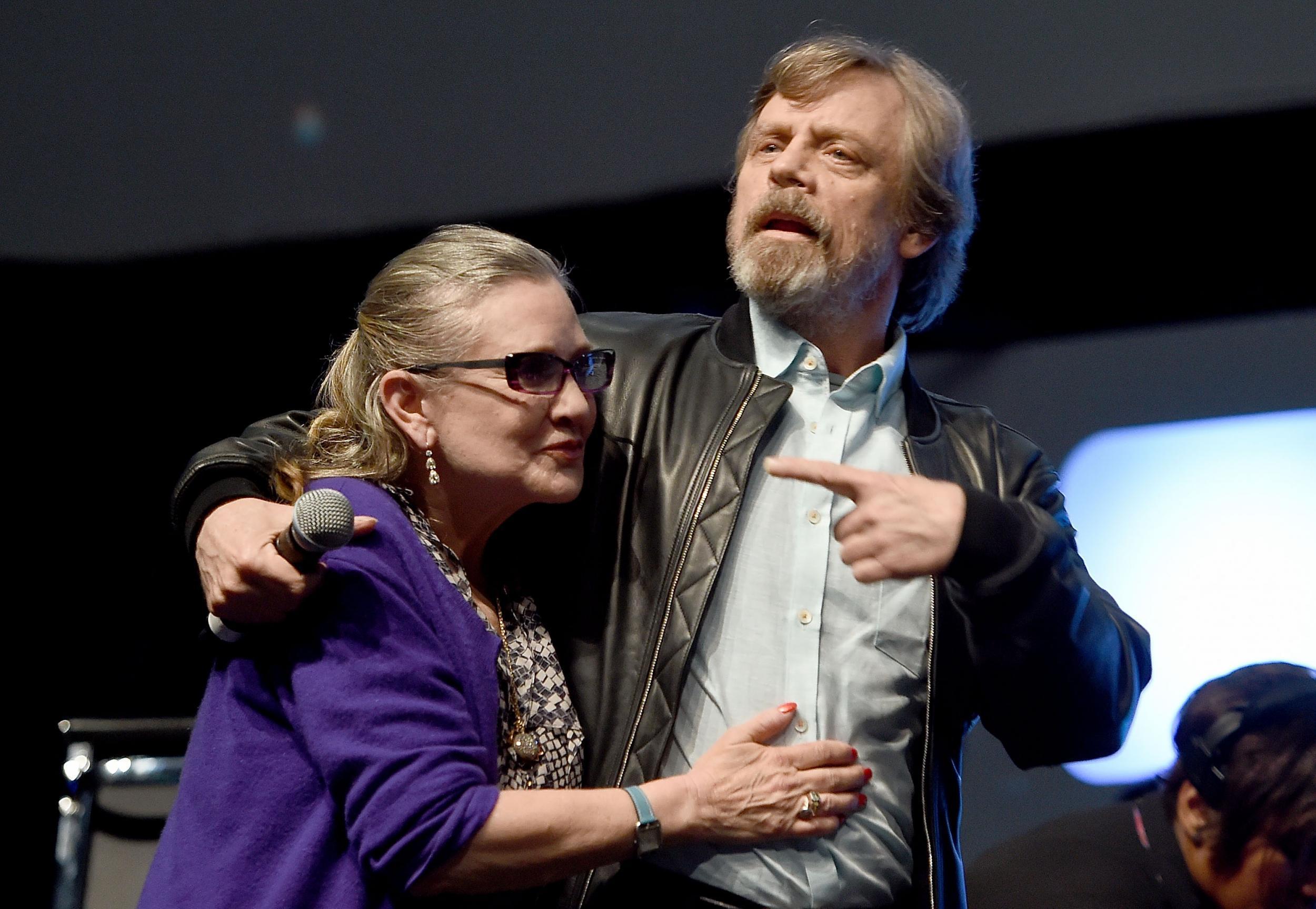
He also feared that audiences would reject him and his veteran co-stars, all these years after their Star Wars heyday. “No one wants to see the 50-, 60-, 70-year-old versions of us, running around, bumping heads on the Death Star,” he said. “It’s sad.”
Hamill thought he would have some cover to refuse The Force Awakens, expecting that Ford would not return.
“He’s too old and too rich and too cranky,” Hamill says. “He’s not going to do this.” But when Ford said yes, Hamill realised he had to agree, too: “Can you imagine if I was the only one to say no? I’d be the most hated man in nerd-dom.”
Soon after accepting, Hamill got to bask in the adulation of Star Wars fans eager to see him on new adventures with the young novices Rey (Daisy Ridley) and Finn (John Boyega). He trained to get into shape and met with Lucasfilm artists. But deeper behind the scenes, JJ Abrams, the director of The Force Awakens, and his co-writer, Lawrence Kasdan, a writer of The Empire Strikes Back and Return of the Jedi, were realising their ever-expanding script could not accommodate Luke’s story line. (The screenplay was credited to Abrams, Kasdan and Michael Arndt.)
“The idea of it was so enormous,” Abrams says. “It became clear that there was no way that that movie could also include those chapters. That had to be the next movie.”
Eventually Abrams had to tell Hamill that Luke would not be a significant character in The Force Awakens. “I let him know before he read the script that his role was minimal,” Abrams says. “I don’t think he knew just how minimal until he read it.”
In their next conversation, Abrams acknowledged, Hamill was “not particularly happy with how little he was in it”.
Hamill does not deny his initial disappointment, though he says he was mostly afraid that Luke’s big reveal at the end would fall flat. “If it smacks the audience as a cheat or a gimmick, if there’s a big groan in the house, the egg’s on my face, not JJ’s,” he says.
Amid lingering feelings of petulance, Hamill travelled to London in 2014 for a table read – he jokingly calls it a “table listen” – of the Force Awakens script. He had no dialogue, so Abrams instead asked him to read the narration. (“I think he wanted to break me, like you break a racehorse,” Hamill says.) Still, he was excited to meet Ridley and Boyega, and to reunite with Anthony Daniels (C-3PO), Peter Mayhew (Chewbacca), Fisher and Ford.
Ford, who had not seen Hamill in many years and shared no scenes with him in The Force Awakens, lamented that they had worked together on the early Star Wars movies far less than viewers realise.

“The number of onscreen days that I spent with Mark were very, very few,” he says. “I knew Chewbacca better.”
Yet as soon as he spotted Hamill there, Ford said, “aside from the obvious passage of time, which had happened to both of us, he was very much the same guy, albeit bearded”.
“He’s very centred in his own experience and his own life,” Ford says. “He’s not a grandstander. He’s a quiet, sincere, workmanlike presence, and that’s what we’re there for.”
Hamill has come to appreciate his extended cameo in The Force Awakens. “When they talk about you that much in a movie before you even show up, that’s fabulous,” he says.
But now he and the The Last Jedi creators understand how much is riding on them with this film.
“I told him, everyone is going to be leaning forward for your first words in this,” says Rian Johnson, Last Jedi writer and director. “Obviously, Mark came into this one with higher expectations for what we do with the character.”
Johnson said The Last Jedi also treated Hamill as an actor who has lived a whole life since he first played Luke. “In the same way that as a young man, he embodied the characteristics we all connected with – the youthfulness and innocence – he now embodies a person full of soul and experience,” Johnson says.
While Hamill tries not to dispute the Star Wars filmmakers on big plot points – he’s still not sure whether Lucas always intended for Luke and Leia to be brother and sister – he found himself full of strong opinions about how the character he has been associated with for 40 years should be presented in The Last Jedi.
“That’s the hard part,” Hamill says. “You don’t want to admit how possessive you’ve become. There are times where you go, ‘Really? That’s what they think of Luke? I’m not only in disagreement – I’m insulted.’ But that’s the process and you thrash it all out.”
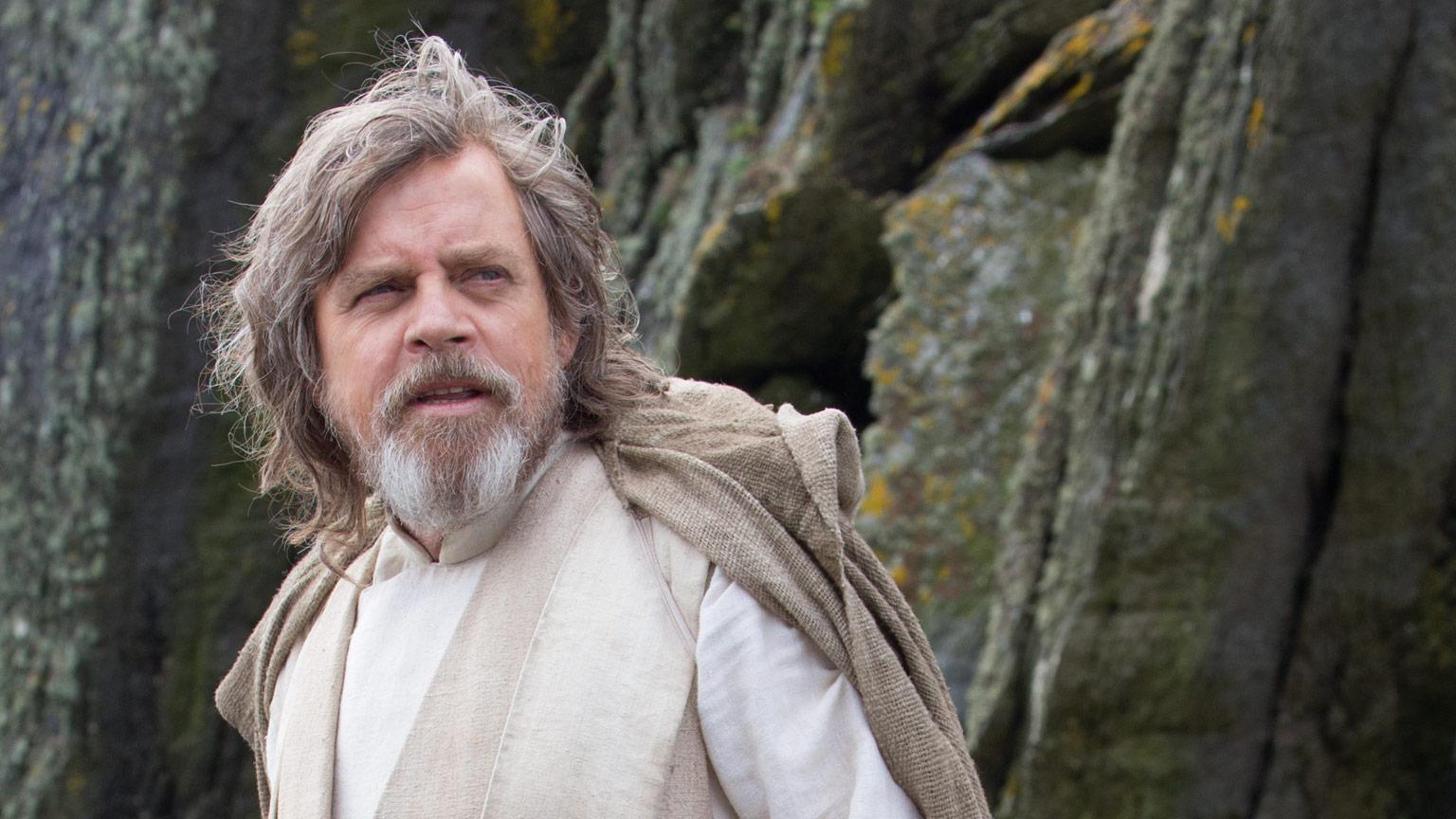
The film has become an unexpectedly poignant document since Fisher died in December. Though their contact was fitful in her final years, Hamill says that Fisher was a reliably caustic companion and correspondent – someone who brought a wicked sense of humour to the occasionally onerous media events they attended together and offered him a constant reminder of his obligation to Star Wars.
Several years ago, when Fisher noticed in a theatre programme that Hamill had referred only elliptically to his Star Wars work, he says, “She goes, ‘What’s your problem?’ I said, ‘Well, it’s theatre, I want it to be more focused on theatre.’ She goes, ‘I am Princess Leia. You’re Luke Skywalker. Get used to it.’”
More remorsefully, Hamill spoke of his frustration that Fisher would not get to complete this trilogy of films.
“She deserved that second act,” he says. “Harrison was more prominent in VII, I’m more prominent in this one, and she was meant to be more prominent in the last one. Her timing was perfect, except in this case.”
His Star Wars colleagues say that there is something fitting about the fact that the devoted, less heralded Hamill is the only lead actor from the original films presently involved with the franchise. “He’s the last man standing,” says Ford, whose character met his demise in The Force Awakens.
But Ford was reluctant to speculate what this distinction might mean to Hamill.
“It means what it means to him, and that’s all that matters,” he says. “I’m sure what he represents in the story is something worthy of attainment by those younger characters, and” – his voice took on an uncharacteristically whimsical tone – “that it’s all linked together in some cosmically glorious way that will assure Mark work for years to come.”
Hamill prefers not to scrutinise this too closely either. Pleading self-consciousness, he says he has not watched the original Star Wars movies outside of cinemas and has seen The Force Awakens only twice.
“All I notice are flaws,” he explains. “‘Oh, why did I do that?’ ‘Look at my hair.’ ‘What was I thinking?’”
During production of The Force Awakens, he allowed himself to watch the audition reels of actors who were also considered for Luke Skywalker – Will Seltzer, Robby Benson, William Katt – and was struck by what he saw. “They were all great,” Hamill says. “They all could have been really good Luke Skywalkers, which really makes me appreciate the arbitrariness.”
One film Hamill goes back to frequently is A Hard Day’s Night, Richard Lester’s madcap comedy about the Beatles happily enduring the hardships of celebrity as they are pursued by fans.
As a teenager, Hamill says, “I saw it originally going, ‘Oh, can you imagine it? Girls chasing me down the street! It looks like so much fun.’” But when he viewed it again recently, he saw it in another light. “It’s like a horror movie,” he says. “They’re trapped. They can’t go anywhere.”
One scene that stuck in Hamill’s mind was the “Can’t Buy Me Love” sequence, when the Fab Four are running through a field, clowning around, blissfully free of the gravitational forces awaiting them in the outside world.
“It’s the one time they spontaneously feel exuberance and joy,” Hamill says. “It plays so differently now, when you’re on the other end of it.”
‘Star Wars: The Last Jedi’ is out on 15 December
© New York Times
Join our commenting forum
Join thought-provoking conversations, follow other Independent readers and see their replies
Comments